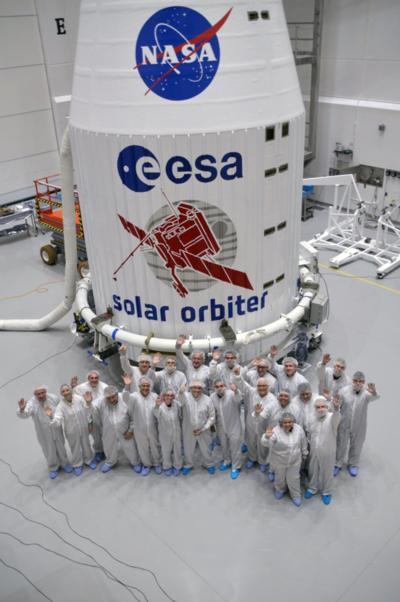Fri, Feb 07, 2020
ESA Sat Will Revolutionise Understanding Of The Sun
Solar Orbiter has been fitted inside the protective fairing, mounted on top of the launcher and is now ready to fly from Cape Canaveral in the evening of 9 February. The next time the satellite will see the Sun will be when it’s in space on its journey to the centre of the Solar System. The European Space Agency (ESA) mission will revolutionise understanding of how the Sun creates and controls the giant bubble of plasma surrounding the Solar System and influences the planets within it.

Solar Orbiter has 10 in-situ and remote sensing instruments to take photographs, spectra, measure solar wind plasma, fields, waves and energetic particles very close to the Sun.
The UK built spacecraft will make a close approach to the Sun every five months; at its closest approach Solar Orbiter will only be 42 million km away, closer than the planet Mercury. During these times it will be positioned for several days over roughly the same region of the Sun’s surface, as the Sun rotates on its axis. This will enable unprecedented observations of magnetic activity building up in the atmosphere that can lead to powerful flares and eruptions.
The spacecraft will use gravity assist manoeuvres at Venus to achieve its elliptical operational orbit and further fly-by manoeuvres to increase its inclination to view the Sun from the Polar Regions for the first time in history.
Solar Orbiter will have to endure temperatures of more than 500°C, hot enough to melt lead. Its heat shield, with a coating called SolarBlack, will continually face the Sun, protecting the sensitive instruments behind it, some of which still require heaters to keep them warm and at optimum operating temperature.
Ian Walters, Airbus’ programme manager for Solar Orbiter said: “After eight years of design and manufacture, Solar Orbiter is now ready to launch and to study the Sun as never before. Everyone in Airbus is excited and just a little apprehensive as we approach the day when the spacecraft starts its journey to the Sun.”
ESA selected Airbus Defence and Space, Stevenage to design and build Solar Orbiter in 2012.
More News
From 2023 (YouTube Version): Legacy of a Titan Robert (Bob) Anderson Hoover was a fighter pilot, test pilot, flight instructor, and air show superstar. More so, Bob Hoover was an i>[...]
Get The Latest in Aviation News NOW on Instagram Are you on Instagram yet? It's been around for a few years, quietly picking up traction mostly thanks to everybody's new obsession >[...]
Aero Linx: B-52H Stratofortress The B-52H Stratofortress is a long-range, heavy bomber that can perform a variety of missions. The bomber is capable of flying at high subsonic spee>[...]
Altimeter Setting The barometric pressure reading used to adjust a pressure altimeter for variations in existing atmospheric pressure or to the standard altimeter setting (29.92).>[...]
"Knowing that we play an active part in bettering people's lives is extremely rewarding. My team and I are very thankful for the opportunity to be here and to help in any way we ca>[...]
 Classic Aero-TV: Remembering Bob Hoover
Classic Aero-TV: Remembering Bob Hoover ANN FAQ: Follow Us On Instagram!
ANN FAQ: Follow Us On Instagram! ANN's Daily Aero-Linx (05.15.24)
ANN's Daily Aero-Linx (05.15.24) ANN's Daily Aero-Term (05.15.24):Altimeter Setting
ANN's Daily Aero-Term (05.15.24):Altimeter Setting Aero-News: Quote of the Day (05.16.24)
Aero-News: Quote of the Day (05.16.24)



